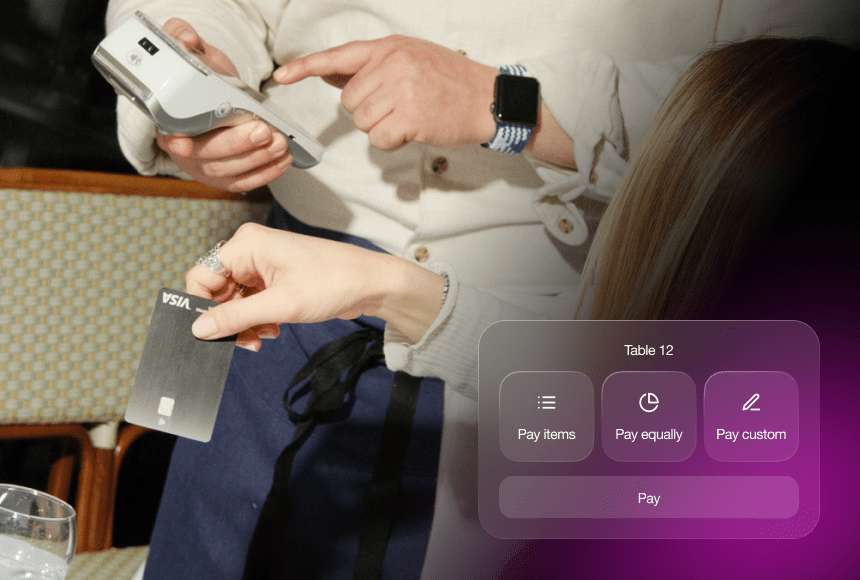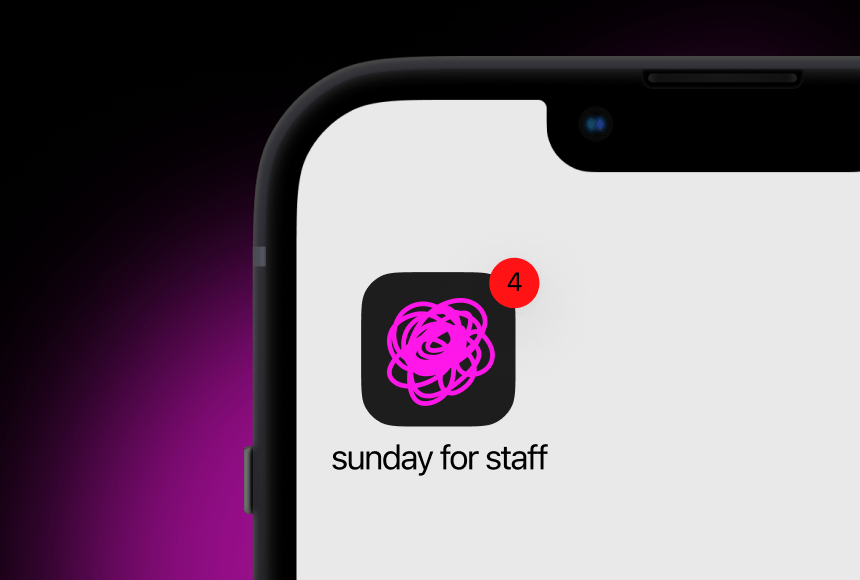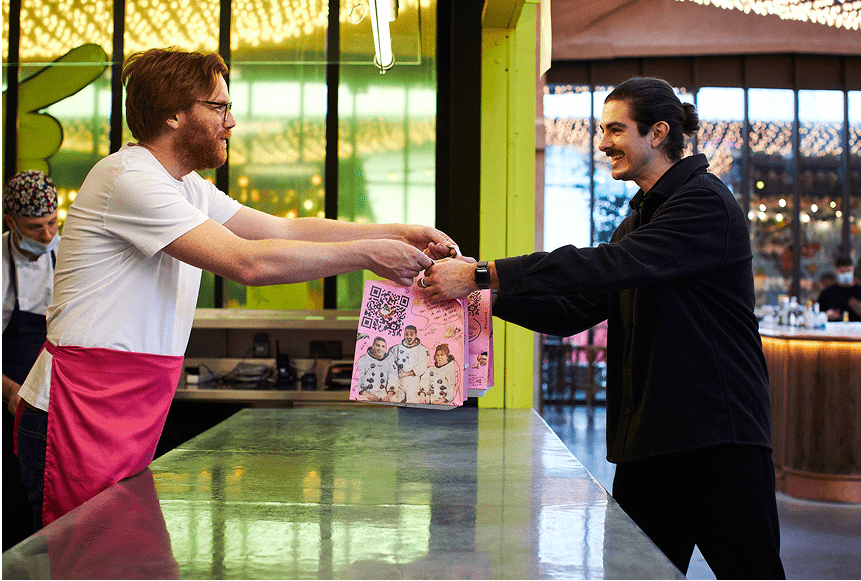
Michelin Magic Meets Contactless: Is Going Cashless the Next Fine Dining Revolution?
The Allure of the Modern Fine Dining Experience
When we think of Michelin-starred restaurants, the first images that spring to mind are gleaming silverware, meticulously arranged flowers, and faultlessly dressed staff moving through an elegant dining room. In these rarefied spaces, each course is a symphony of flavours, and every interaction is choreographed to create a truly memorable experience. Yet, in today’s increasingly digital world, there’s a new – and perhaps unexpected – item joining the menu: the cashless payment.
Over the last decade, the UK hospitality sector has steadily integrated digital payment solutions, from “tap-and-go” card readers to mobile apps that let diners pay by scanning a simple QR code. But can even the most traditional and luxurious dining establishments embrace this evolution? After all, the Michelin Guide symbolises culinary excellence, not necessarily technological adoption. Where do QR codes and contactless card machines fit within the grandeur of a major tasting menu? And how can restaurant owners ensure a seamless experience without losing the enchantment of fine dining?
In this article, we’ll explore the intersection of digital payments and high-end gastronomy in the UK. We’ll examine the specific concerns Michelin-starred restaurants may have about going cashless, weigh the potential benefits and trade-offs, and discover how technology can be harnessed to preserve the hallmark ambience of luxury dining. The question is: just how ready is fine dining to embrace digital bills?
Why the Shift to Cashless Is Gathering Momentum
Cash’s star has been fading gradually for years, with a noticeable acceleration since the COVID-19 pandemic. In the UK alone, contactless payments accounted for over 26% of all payments by consumers in 2021 (source), a figure that continues growing. Meanwhile, digital wallets and QR-code-enabled tools have become increasingly popular among younger diners who often leave cash behind in favour of the convenience of phone-based transactions.
Though quick-service restaurants and casual eateries were early adopters, fine dining has been slower on the uptake. There’s a sense that cash, or at least “traditional” payment methods, lend a certain gravitas. An elegant leather billfold with a discreet slip of paper, after all, has been part of the overall dining spectacle. Yet, trends suggest that Michelin-starred establishments may soon find that offering a fully cashless option – or even going entirely cash-free – could be a natural progression for an industry that thrives on providing impeccable service and removing points of friction for guests.
Preserving Luxury in a Digital Age
The heart of the dilemma for many Michelin-starred restaurants lies in maintaining a refined atmosphere. When the experience is built around exclusivity, elegance, and tradition, anything that feels “tech-heavy” can appear jarring. There’s also a concern that digitising the payment process might diminish the personal interaction between diner and server. Some owners fear that an app-based payment system could be perceived as impersonal – a quick tap on a phone replacing the gracious exchange of a freshly printed bill.
Yet, it’s worth noting that fine dining has always evolved in subtle ways to reflect changing tastes and technology. Many Michelin-starred chefs already employ molecular gastronomy or modern plating techniques. They incorporate the latest kitchen equipment to keep up with demand, and they readily adopt digital reservation systems to manage waitlists and cancellations. The leap to digital bills might simply be another graceful step, one that preserves the theatre of service while offering guests the ability to finalise payment at their convenience.
The Practical Benefits of Going Cashless
Fine dining experiences are shaped by moments of delight – anticipating your guests’ needs before they even realise they have them. Payment is just one piece of this puzzle, but it can either punctuate the evening seamlessly or disrupt the atmosphere if the process is slow or complicated. Here’s how a cashless strategy might enhance the overall experience:
- Speed and convenience: Whether guests use contactless cards or smartphone wallets, cashless payments often take fewer than 10 seconds to process. This ensures a smooth end to the meal, especially convenient for those guests eager to continue their evening elsewhere.
- Reduced errors: Reconciling cash at the end of the night can be time-consuming and prone to mistakes. By removing physical currency, restaurants eliminate the frustration of missing notes and unbalanced tills.
- Enhanced tipping options: Integrating digital tipping can prompt generosity. Some diners are more comfortable tapping “add tip” on a screen, especially when explicit percentage options appear without pressure.
- Secure transactions: Cashless systems, complete with encryption and authentication, reduce the risk of theft and fraud. This adds peace of mind for both owners and customers.
With so many positives, it’s no surprise that some of the UK’s top eateries are already experimenting with digital-only payments. It’s not about pushing technology for its own sake. Instead, it’s about optimising the user journey from start to finish when guests choose your restaurant for a special occasion.
Challenges and Considerations for Michelin-Starred Establishments
Of course, adopting a cash-free policy in a fine dining setting has its complexities:
- Guest Demographics: Michelin-starred restaurants often have an older clientele or international tourists who may prefer the familiarity of traditional payment methods. It’s vital to communicate any policy changes clearly so as not to alienate key audiences.
- Aesthetic Disruption: A keypad or QR code can feel out of place amidst polished cutlery, crystal glasses, and sculpted plating. Careful design and discrete integration can help maintain the overall ambience.
- Technological Reliability: A tech failure during a busy Saturday night service is a nightmare. Make sure you’re equipped with robust software and reliable backup processes if your card machine or QR payment app encounters issues.
Restaurant owners must weigh these factors carefully. While a digital transformation project might look seamless on paper, the real test comes when it must slot unobtrusively into an environment curated down to the last detail.
Case in Point: The Delicate Balance of Haute Cuisine Technology
Imagine a fictitious Michelin-starred restaurant in the heart of London, “La Fleur Royale,” renowned for its two-star rating in the Michelin Guide. The menu pairs British produce with classic French techniques, attracting a clientele that ranges from international business executives to discerning local fine diners. Each evening, the dining room is set to perfection with fresh linen, polished silver, and an operatic hush broken only by the gentle murmur of sophisticated conversation.
“La Fleur Royale” decides to adopt a cashless strategy for two reasons: to reduce handling costs and enhance convenience for guests. The owner invests in modern yet understated card readers that look sleek and unobtrusive on the custom silver trays. She also opts to include a QR-code-based payment system – discreetly placed at the bottom edge of the leather menu. This synergy ensures minimal disruption: servers can easily present a digital payment option if a guest asks to settle the bill without fuss. And if there’s any glitch or if a guest is more comfortable with a card, a stylish card machine is available.
Ultimately, “La Fleur Royale” finds that guest satisfaction soars because diners who are accustomed to paying by phone can do so with minimal friction, while those uncertain about these systems can simply tap their credit card or even a smartwatch. The key lies in choice, presentation, and the discreet, well-trained staff on-hand to guide patrons through any queries.
A Look at Payment Technology for Premium Hospitality
For Michelin-starred restaurants that do decide to go cashless or embed digital payment touchpoints, there’s no shortage of technology to consider:
- Contactless Card Machines: Sleek and easy-to-use, these allow for card or device-based payments without requiring a PIN for transactions under a certain threshold. They often process receipts digitally, which can be emailed at the guest’s request.
- QR Code Payment Solutions: Companies like sunday have built QR-code tech that empowers customers to pay directly from their smartphones. This can help speed up table turnover and give patrons control over tipping, splitting the bill, and even sharing reviews.
- Mobile Wallets: Apple Pay, Google Pay, and Samsung Pay continue to gain popularity. By accepting these, a restaurant reduces friction and caters to diners who rarely carry physical wallets.
Choosing the right system (or combination of systems) is critical. The restaurant’s atmosphere and brand identity should harmonise with the selected payment tool, not fight against it. A bold, neon-coloured smartphone app might feel out of place if everything else is understated white linen and candlelight. Employing elegant design in the digital sphere is as essential as plating a dish to perfection.
Implementing a Cashless System: Best Practices for Fine Dining Owners
If you’re a Michelin-starred restaurateur contemplating a move away from cash, there are several strategies to ensure a smooth transition:
- Communicate Early and Often: Let diners know in advance about your preferred payment methods, whether via your website, a reservation confirmation email, or in the welcome email. Clear communication helps manage expectations.
- Stage a Soft Launch: Start by offering digital payments as an option rather than the only method. This allows you to gather feedback and handle potential teething problems discreetly.
- Train Your Staff Well: Servers should be ready to answer questions about how the system works, from scanning the QR code to selecting a tip amount. A confident, knowledgeable team helps lend credibility to the new payment methods.
- Focus on Design Integration: If you plan to use QR codes, consider printing them in an elegant style consistent with your menus. If you’re handing over a card machine, ensure it has a sleek design befitting your surroundings.
- Keep Backup Options: While pushing for cashless, have a safety net. Keep at least one functional cash till and an extra card reader stashed away. Technology can fail at inopportune moments, and you don’t want to leave guests stranded.
The essence here is subtlety and reassurance. Going cashless need not be abrupt or alienating; it should feel like a natural addition to the overall flow of the dining experience.
Are Guests Ready to Embrace Digital Bills in Luxury Restaurants?
According to the Office for National Statistics, nearly 90% of UK adults used the internet on a daily basis in 2022. This widespread digital integration underscores a growing acceptance of technology across all age groups. Unsurprisingly, younger diners tend to adapt quickly, reaching for their phones to settle a bill without a second thought. Even older guests, once they’re shown how seamless it is, often become enthusiastic converts.
Furthermore, the ubiquity of social media and review platforms means guests are already accustomed to pulling out their phones for a quick photo of that amuse-bouche or to leave a glowing Google review. Embracing a digital payment method can feel like a perfectly natural extension. The entire dining journey is elevated when the technology at play is elegant, user-friendly, and introduced by a warm, expert team.
Delivering an Elevated Guest Journey from Start to Finish
At the heart of a Michelin-starred restaurant is an obsession with detail. Every step – from importing top-quality produce to orchestrating front-of-house service – is designed to orchestrate delight. If integrated thoughtfully, digital payments can act as the graceful finale rather than an unwelcome intrusion. Meanwhile, data gleaned from digital transactions provides valuable insights for owners. By looking at spending patterns, you can tailor your menu or create curated wine pairings that resonate with your clientele’s preferences.
For example, if you notice a recurring trend of diners who split bills across multiple credit cards, you could offer a built-in split-bill function through your QR code platform. If many customers use Apple Pay, you might refine your branding to emphasise the ease of smartphone payments. By letting guests settle up at their own pace, you reduce the awkward “where’s the server?” wait, effectively creating more time for genuine pleasantries.
How sunday Can Help: Simplicity, Speed, and Delight
One payment platform that prides itself on making the experience as effortless as possible is sunday. By simply scanning a QR code on the table, guests can view their itemised bill in real time, split or adjust tips, and settle up without needing to summon staff with a card machine. The entire system is designed to preserve the sophistication and nuance of interaction while banishing the fidgety wait for the bill folder.
For Michelin-starred restaurants, the intangible benefit is genuine service continuity. Rather than interrupting the atmosphere with multiple back-and-forths, the server can remain a discreet presence. The “finishing touches” become more about personalising the farewell – thanking the diner for their visit, perhaps suggesting a favourite digestive or cheese course – rather than the logistics of payment. Fine dining is about moments, and technology like sunday helps ensure those moments flow without friction.
A Quick Pros and Cons Table for Going Cashless
| Pros | Cons |
|---|---|
| Faster, more convenient checkout | Technological hiccups can disrupt service |
| Reduces errors and reconciliation issues | Potential pushback from cash-loving clientele |
| Safer, more secure transactions | Aesthetic integration must be handled carefully |
| Digital tipping can boost gratuities | Staff training is necessary |
| Data insights on spending habits | Extra costs for software/hardware |
Encouraging Google Reviews and Beyond
No matter how stellar your reputation, there’s always value in feedback. Many digital payment platforms prompt diners to leave a review once they’ve completed their transaction. This can instantly translate satisfied guests into online advocates. If a thoughtful server recommended a sublime wine pairing, or if the chef’s amuse-bouche made jaws drop, a quick review will help future customers discover those extraordinary moments.
And boosting Google reviews isn’t just about vanity. A strong public rating can drive new bookings and widen your loyal customer base over time. For Michelin-starred restaurants especially, the synergy of critical acclaim and excellent public feedback can be a powerful combination.
The Long View: Future-Proofing Your Establishment
While the menu and décor of a restaurant might evolve each season, one of the biggest challenges is staying ahead of dining and payment trends. Today’s guests crave experiences that are memorable both in flavour and ease of service. Embracing digital payments is one way to signal that your establishment not only appreciates tradition but also welcomes innovation.
Transitioning to a cashless or digitally focused system can yield immediate benefits: simplified payroll, reduced overhead from cash handling, and minimised risk of theft. On top of that, you’re building resilience in a rapidly changing market. While older diners might still cling to banknotes, the future points firmly toward contactless and mobile-first experiences. Preparing now ensures you don’t find yourself playing catch-up in the years to come.
FAQ: Questions Michelin-Starred Restaurants Often Ask
Does going cashless mean I have to refuse all physical currency?
Not necessarily. Many restaurants choose a hybrid approach, awarding guests the option to pay digitally while keeping a minimal cash float for those who prefer it. However, fully cashless operations are possible if communicated clearly.
How can I make a QR code payment option look luxurious?
Consider thoughtful design. You can integrate a stylish QR code into your physical menu or print it on high-quality material that aligns with your branding. Keep it discreet yet clearly visible, and train staff to guide guests through the process graciously.
Will digital payments reduce tipping?
Quite the opposite can be true. Many digital solutions explicitly prompt diners to tip, sometimes with preset percentage amounts. This can encourage more generous gratuities, as it takes the guesswork out of calculating tips on the spot.
What if a guest insists on paying by cash?
If you operate entirely cashless, a respectful yet consistent policy is key. Politely inform them that you accept only card or QR code payments, and offer to guide them through the process. If you want a safety net, keep a small float on hand. Just ensure that guests are aware in advance when booking.
Does this technology distract from the “Michelin moment”?
With seamless integration, it shouldn’t. Going cashless ideally removes the awkward waiting periods at the end of the meal, allowing guests to focus on the experience. Be sure that technology remains an invisible ally, not the star of the show.
Adopting digital payments in a Michelin-starred restaurant may seem like an audacious move, but the tide of technology is transforming how we dine. At the end of the day, Michelin-starred gastronomy revolves around delighting the guest. Going cashless simply offers one more opportunity to shape a journey that is modern, seamless, and brimming with possibility – all without compromising the timeless allure that defines high-end dining. As the industry continues its march into the digital era, restaurant owners who embrace these changes can stay a step ahead in delivering a truly next-level dining experience.
Find out more today
Drop us your details below and we’ll reach out within the next 24
“Bill please” is a thing of the past.
With our integrated QR codes your customers pay in seconds, straight from their table.




